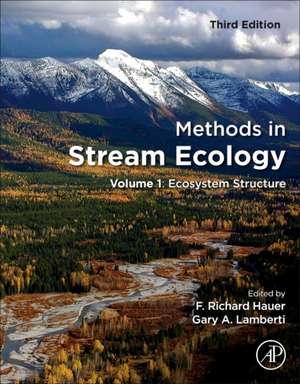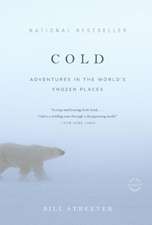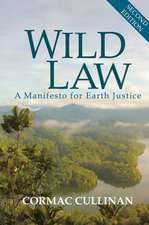Methods in Stream Ecology: Volume 1: Ecosystem Structure
Editat de F. Richard Hauer, Gary Lambertien Limba Engleză Paperback – 18 apr 2017
Methods in Stream Ecology, 3rd Edition, Volume 2: Ecosystem Structure, is also available now!
- Provides a variety of exercises in each chapter
- Includes detailed instructions, illustrations, formulae, and data sheets for in-field research for students
- Presents taxonomic keys to common stream invertebrates and algae
- Includes website with tables and a link from Chapter 22: FISH COMMUNITY COMPOSITION to an interactive program for assessing and modeling fish numbers
- Written by leading experts in stream ecology
| Toate formatele și edițiile | Preț | Express |
|---|---|---|
| Paperback (2) | 367.77 lei 2-4 săpt. | |
| ELSEVIER SCIENCE – 18 apr 2017 | 367.77 lei 2-4 săpt. | |
| ELSEVIER SCIENCE – 2 iun 2017 | 387.83 lei 2-4 săpt. |
Preț: 367.77 lei
Preț vechi: 440.98 lei
-17% Nou
Puncte Express: 552
Preț estimativ în valută:
70.38€ • 76.42$ • 59.12£
70.38€ • 76.42$ • 59.12£
Carte disponibilă
Livrare economică 25 martie-08 aprilie
Preluare comenzi: 021 569.72.76
Specificații
ISBN-13: 9780124165588
ISBN-10: 0124165583
Pagini: 506
Dimensiuni: 216 x 276 x 27 mm
Greutate: 1.17 kg
Ediția:3
Editura: ELSEVIER SCIENCE
ISBN-10: 0124165583
Pagini: 506
Dimensiuni: 216 x 276 x 27 mm
Greutate: 1.17 kg
Ediția:3
Editura: ELSEVIER SCIENCE
Public țintă
Researchers, federal, state and local government officials interested in and repsonsible for stream evaluation and monitoring. Advanced undergrad in stream and freshwater ecology, freshwater biology, marine ecology, river ecology, geomorphology, watershed ecology and management, hydrology, and landscape ecology.Cuprins
Section A. Physical Processes
1. Riverscapes
2. Valley Segments, Stream Reaches, and Channel Units
3. Discharge Measurements and Streamflow Analysis
4. Dynamics of Flowing Water
5. Fluvial Geomorphic Processes
6. Temperature
7. Light
8. Hyporheic Zones
Section B. Stream Biota
9. Heterotrophic Bacteria Production and Microbial Community Assessment
10. Fungi: Biomass, Production, and Community Structure
11. Benthic Stream Algae: Distribution and Structure
12. Biomass and Pigments of Benthic Algae
13. Macrophytes and Bryophytes
14. Meiofauna
15. Macroinvertebrates
16. Fish Assemblages
17. Amphibians and Reptiles
Section C. Community Interactions
18. Invertebrate Consumer–Resource Interactions
19. Macroconsumer–Resource Interactions
20. Trophic Relationships of Macroinvertebrates
21. Macroinvertebrate Drift, Adult Insect Emergence and Oviposition
22. Trophic Relations of Stream Fishes
1. Riverscapes
2. Valley Segments, Stream Reaches, and Channel Units
3. Discharge Measurements and Streamflow Analysis
4. Dynamics of Flowing Water
5. Fluvial Geomorphic Processes
6. Temperature
7. Light
8. Hyporheic Zones
Section B. Stream Biota
9. Heterotrophic Bacteria Production and Microbial Community Assessment
10. Fungi: Biomass, Production, and Community Structure
11. Benthic Stream Algae: Distribution and Structure
12. Biomass and Pigments of Benthic Algae
13. Macrophytes and Bryophytes
14. Meiofauna
15. Macroinvertebrates
16. Fish Assemblages
17. Amphibians and Reptiles
Section C. Community Interactions
18. Invertebrate Consumer–Resource Interactions
19. Macroconsumer–Resource Interactions
20. Trophic Relationships of Macroinvertebrates
21. Macroinvertebrate Drift, Adult Insect Emergence and Oviposition
22. Trophic Relations of Stream Fishes
Recenzii
"This book is packed with the latest and best ‘how to’ information for field and laboratory work in streams. The new edition has expanded content, a larger format, and much better graphics...The greatest content change is the addition of a 6th section entitled Ecosystem Quality. Section 6 is anchored by a substantially rewritten chapter on ‘Macroinvertebrates as Biotic Indicators of Environmental Quality’...I like the way in which doable, detailed, stepwise exercises, including the math, are provided in a format appealing to students interested in conducting stream studies...I think that even an advanced high school student with access to this book should be able design an independent study project in stream ecology. I would really like to see it in high school libraries, as well as on college and university campuses. The greatest strength of this book is that it is written by leading authorities in stream ecology. The structure is better organized and more informative than the previous edition. The format is conducive to teaching and learning. I grade this book an 'A'." --Ben Stout, Wheeling Jesuit University, West Virginia, USA













